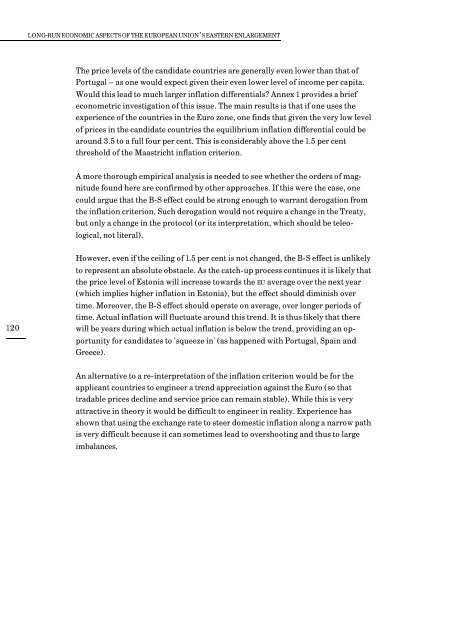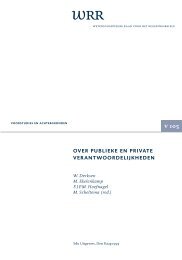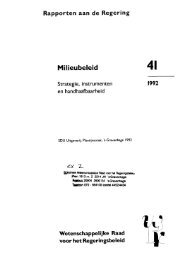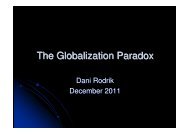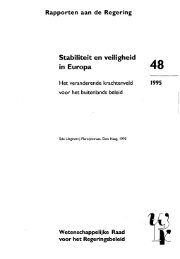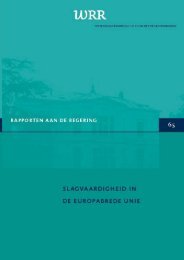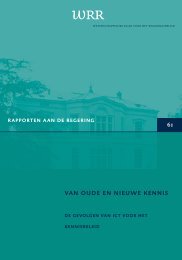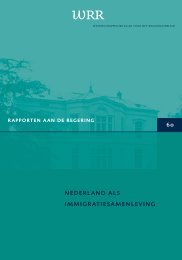w 109 long-run economic aspects of the european union's eastern ...
w 109 long-run economic aspects of the european union's eastern ...
w 109 long-run economic aspects of the european union's eastern ...
Create successful ePaper yourself
Turn your PDF publications into a flip-book with our unique Google optimized e-Paper software.
LONG-RUN ECONOMIC ASPECTS OF THE EUROPEAN UNION’S EASTERN ENLARGEMENTThe price levels <strong>of</strong> <strong>the</strong> candidate countries are generally even lower than that <strong>of</strong>Portugal – as one would expect given <strong>the</strong>ir even lower level <strong>of</strong> income per capita.Would this lead to much larger inflation differentials? Annex 1 provides a briefeconometric investigation <strong>of</strong> this issue. The main results is that if one uses <strong>the</strong>experience <strong>of</strong> <strong>the</strong> countries in <strong>the</strong> Euro zone, one finds that given <strong>the</strong> very low level<strong>of</strong> prices in <strong>the</strong> candidate countries <strong>the</strong> equilibrium inflation differential could bearound 3.5 to a full four per cent. This is considerably above <strong>the</strong> 1.5 per centthreshold <strong>of</strong> <strong>the</strong> Maastricht inflation criterion.A more thorough empirical analysis is needed to see whe<strong>the</strong>r <strong>the</strong> orders <strong>of</strong> magnitudefound here are confirmed by o<strong>the</strong>r approaches. If this were <strong>the</strong> case, onecould argue that <strong>the</strong> B-S effect could be strong enough to warrant derogation from<strong>the</strong> inflation criterion. Such derogation would not require a change in <strong>the</strong> Treaty,but only a change in <strong>the</strong> protocol (or its interpretation, which should be teleological,not literal).120However, even if <strong>the</strong> ceiling <strong>of</strong> 1.5 per cent is not changed, <strong>the</strong> B-S effect is unlikelyto represent an absolute obstacle. As <strong>the</strong> catch-up process continues it is likely that<strong>the</strong> price level <strong>of</strong> Estonia will increase towards <strong>the</strong> EU average over <strong>the</strong> next year(which implies higher inflation in Estonia), but <strong>the</strong> effect should diminish overtime. Moreover, <strong>the</strong> B-S effect should operate on average, over <strong>long</strong>er periods <strong>of</strong>time. Actual inflation will fluctuate around this trend. It is thus likely that <strong>the</strong>rewill be years during which actual inflation is below <strong>the</strong> trend, providing an opportunityfor candidates to 'squeeze in' (as happened with Portugal, Spain andGreece).An alternative to a re-interpretation <strong>of</strong> <strong>the</strong> inflation criterion would be for <strong>the</strong>applicant countries to engineer a trend appreciation against <strong>the</strong> Euro (so thattradable prices decline and service price can remain stable). While this is veryattractive in <strong>the</strong>ory it would be difficult to engineer in reality. Experience hasshown that using <strong>the</strong> exchange rate to steer domestic inflation a<strong>long</strong> a narrow pathis very difficult because it can sometimes lead to overshooting and thus to largeimbalances.


